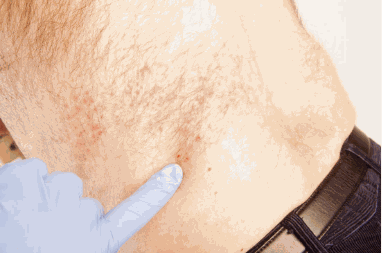Shingles
Shingles is caused by the Varicella Zoster virus, a herpes virus that also causes chicken pox.
Shingles can develop only from a reactivation of the varicella zoster virus in someone who has previously had chicken pox. In other words, shingles itself is not transmitted from one person to another; in order to get shingles you must first have a chicken pox infection. Once it enters the body, the varicella virus can live dormant in nerve cells for years and, given the right trigger, can be reactivated leading to a painful outbreak of shingles. Shingles is most often diagnosed by sight because of its distinctive rash of small, fluid-filled blisters that occur in a stripe (called a dermatome) anywhere on the body, usually only on one side.
Stress and a weakened immune system are the perfect triggers for a shingles outbreak. Most people get their first outbreak either after a prolonged period of stress which suppresses the immune system or after a major illness which makes it work very hard. In both cases, the end result is the same for those who carry the varicella virus – the virus, that has been dormant for many years, suddenly has an opportunity to become active and cause a shingles outbreak.
The first sign of an outbreak is painful or tingling skin a few days before the rash appears. Then, once the rash and blisters appear, it takes about 2-4 weeks for the rash, blisters, fatigue and pain to go away. In most cases, the rash and blisters will resolve and people may never have another outbreak. However for some, the nerve pain can continue for months or even years and can go on to cause what is known as ‘post-herpetic neuralgia’ – or nerve pain. Long after there is any sign of the virus, people may have chronic burning nerve pain along the same path the rash took.
